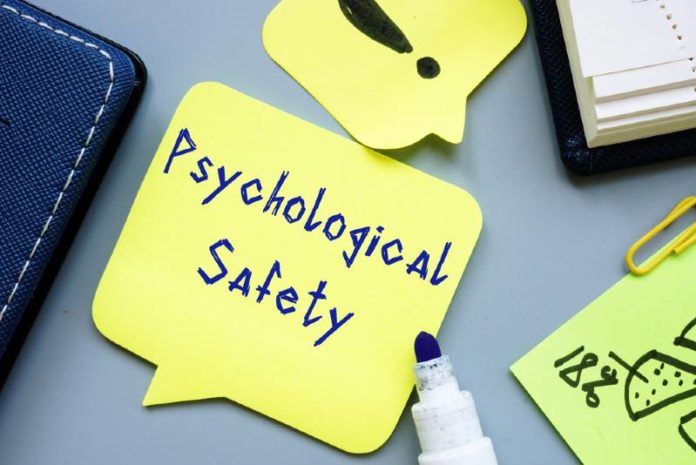The importance of employee mental health and well-being has begun to be recognized as one of the most vital aspects an organization has to be particular about. But this article isn’t just about mental health. Psychological safety at the workplace is a concept that meets at the intersection of employee well-being and organizational efficiency.
What is psychological safety?
Psychological safety is the assurance that team members can take risks and express themselves freely, without fearing any negative consequences.
It easily shows when a team isn’t psychologically safe. In such a team, the members often fear embarrassment, ridicule, or worse, punishment if they fail to abide by the rules or suggest something that others don’t approve of.
On the other hand, in a psychologically safe environment, employees seem confident in the workplace. For taking an unconventional route, questing decisions, or suggesting “whacky” ideas, they don’t fear being judged.
Benefits of fostering psychological safety at the workplace
Psychological safety in teams eliminates any threats to employees’ efficiency from within the organization. As a result, the employees are able to channelize all their focus and energy into helping the organization overcome external threats and perform better by the day.
Here are some common ways psychological safety enables a team to constantly be better:
- A psychologically safe team is a harbour of constant innovation. That’s because such teams often bond over sharing raw, unconventional ideas.
- Teams that feel psychologically safe are generally happier, much happier. In a culture of complete acceptance, people don’t shy away from showcasing humour in routine conversations.
- Psychological safety also paves the way for a culture of constructive criticism. Just as people can share their ideas freely, others can share their feedback freely.
- The concept of psychological safety is still relatively rarely implemented in workplaces. If you take these efforts for your team, you earn their loyalty as nobody wants to leave a team that feels safe and positive to work with.
How to make your team feel psychologically safe
The following are the major actions leaders must take to begin working towards psychological safety:
-
Start with self-awareness
We are all products of social conditioning and each one of us has certain ingrained biases.
As a leader, take it upon yourself to help the team uncover their biases. If needed, have an expert over to address the issues respectfully and help the team get rid of their biases.
When nobody is biased or discriminates against anyone, the team automatically becomes a safe space for everyone to be who they want to be.
-
Invest in communication skills development
Communication is the foundation of a healthy relationship and thus, it plays a vital role in promoting healthy interpersonal interactions at the workplace.
Many times, simply the wrong choice of words may offend people and lead to conflicts. Teaching employees how to ask questions the right way, give constructive feedback, and resolve misunderstandings go a long way in fostering a strong bond amongst the team members.
The right and polite choice of words helps others understand that it’s the topic at hand you are debating, not their competence. Debating is a skill. Once your team learns how to do it right, your organization will only have healthy conflicts. Healthy conflicts are vital for broadening the perception of a team and helping them venture into newer ideas.
-
Encourage everyone at the workplace to speak up, in whatever way they are comfortable
Despite the above two measures, it’s likely that not everyone in the team feels confident sharing their thoughts or feelings. It has got nothing to do with you as a leader. Certain personality traits may make it difficult for some people to come forward and express themselves.
The best way to overcome this is to provide many different methods and channels for feedback. On one hand, it makes the employees feel you really do care about their feedback. On the other, it also makes them feel accepted for their preference for a certain way of expression.
The Bottom Line
In a nutshell, psychological safety at the workplace is about enabling employees to be themselves, fully and fearlessly. It is a vital part of both employee well-being and promoting diversity and inclusiveness in an organization. Leaders need to understand that psychological safety alone will not lead to a positive workplace and employee engagement. However, it does serve as a prerequisite to fostering strong interpersonal connections and thus, is a stepping stone to positive workplace culture.
If you are a leader who, like me, is always working towards making your team more inclusive, you will find this article super useful: 5 Effective Ways To Make Your Virtual Workspace More Inclusive.
Tapan Patel is a co-founder at Third Rock Techkno, a dynamic IT services company in the US. With a humble beginning 7 years ago, he has gained expertise in bringing together the best teams and shaping them into a loyal, efficient workforce. Tapan is an avid reader and he is passionate about sharing his leadership insights with global communities. His writings have been featured in established blogs like Simple Programmer, Real-leaders.com and more. LinkedIn; Twitter; Website.
Psychological safety stock photo by Yuriy K/Shutterstock







